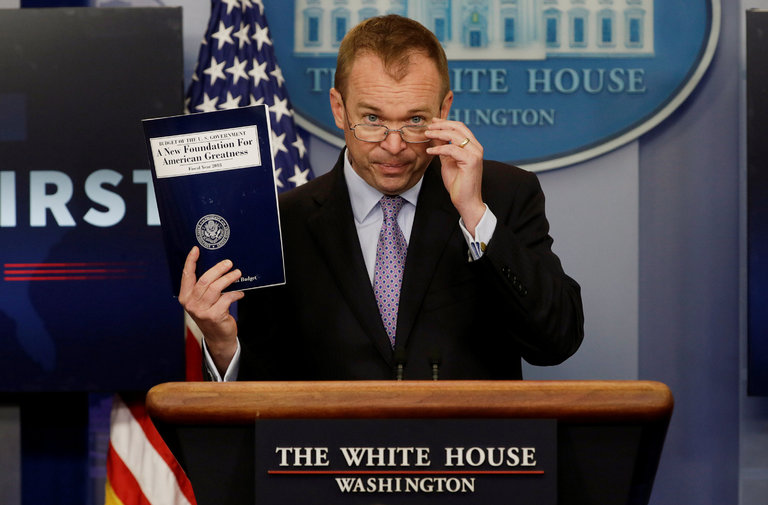BY DEAN BAKER
The New York Times (5/23/17) ran a column by Maya MacGuineas, the president of the Peter Peterson–backed Committee for a Responsible Federal Budget. The piece begins with the ominous announcement:
President Trump entered office facing the worst ratio of debt to gross domestic product of any new president in American history except Harry Truman—an onerous 77 percent.
It could have also begun with the announcement that the ratio of debt service (interest on the debt, net of payments from the Federal Reserve Board) to GDP is less than 1 percent. This contrasts with a ratio of almost 3.0 percent in the early and mid-1990s. Are you scared yet?
Actually, you should be. Folks like Ms. MacGuineas have pushed austerity policies in the United States and around the world for the last decade. These policies have prevented the government from spending the amount necessary to restore the economy to full employment. This has not only kept millions of people in the United States from having jobs, it has prevented tens of millions from getting pay increases by weakening their bargaining power.
Furthermore, the lower levels of output have an enduring impact on the economy. They are associated with less investment in public and private capital, and less money spent on research and development. In addition, unemployed workers don’t gain the experience they would have otherwise. Many of the long-term unemployed drop out of the labor force and may end up never working again.
As a result of these effects, the Congressional Budget Office now estimates that the economy’s potential level of output for 2017 is 10 percent less than what it had projected for 2017 back in 2008, before the Great Recession really took hold. The loss in output due to this austerity tax is roughly $2 trillion a year. This is the reduction in wages and profit income as a result of the smaller size of the economy. That comes to $6,000 per person per year.
This is the burden that the Peter Peterson crew have imposed on our children and grandchildren due to their scare tactics on the deficits. (Hey, remember the Reinhart-Rogoff 90 percent debt-to-GDP cliff?) And fans of logic everywhere know that it will not matter one iota to our kids’ well-being if the government were to increase taxes on each of them by $6,000, or whether its austerity policies lead them to earn $6,000 less each year.
Not to mention the rents from government-granted patent and copyright monopolies. As I point out in Rigged, these come to close to $400 billion a year in the case of prescription drugs alone. This is the difference between the patent-protected price and the free-market price. It is effectively a privately collected tax. If we add in the rents from medical equipment, software and other items, the figure could easily be twice as high. In other words, we are making our kids pay $400 billion to $800 billion a year to pay for the research and creative work that was done in the past.
Anyone seriously concerned about the burden we impose on our kids has to include this cost in their calculations. Otherwise, they just deserve to have their pronouncements treated with ridicule.
Unfortunately, because of the distribution of money and power in society, it is only the taxes that will draw attention. The fact that inept economic management needlessly caused us to sacrifice economic growth, and did so in a way that disproportionately hurt the poor and middle class, is considered rude to mention in polite company.
Instead, we get columns with meaningless figures about debt to GDP that are designed to scare people.
A version of this post originally appeared on CEPR’s blog Beat the Press (5/24/17).
You can send a message to the New York Times at letters@nytimes.com (Twitter:@NYTOpinion). Please remember that respectful communication is the most effective.

